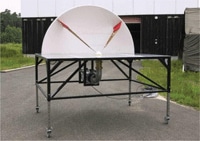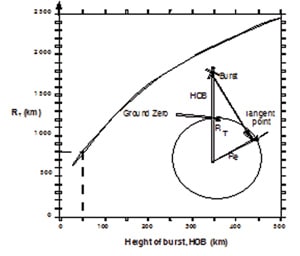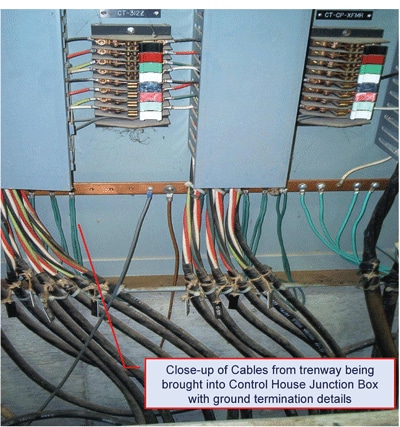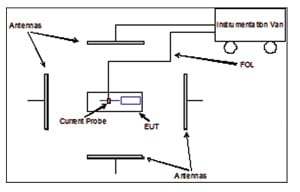INTRODUCTION
It has been three years since the state of the art dealing with IEMI and HEMP has been updated in the Interference Technology Annual EMC Guide in 2007 [1]. A significant amount of work has been accomplished worldwide during this period. This paper will review significant special sessions and tutorials at International EMC Conferences, published papers and reports, and advancements in the area of standards.
With regard to conferences there have been many IEMI and HEMP special sessions and tutorials that were presented beginning at the EMC Europe Workshop in Paris in June 2007 and ending with the EMPACT Conference in Niagara Falls, N.Y., in September 2009. The highlights will be presented here.
A second area to be discussed in this article is the work of the U.S. Congressional EMP Commission. They completed the first portion of their work in 2004 by describing the overall HEMP threat to the U.S. infrastructure, and they restarted their work in May 2006 to review the response to their initial report and to encourage those responsible for the critical infrastructures to develop mitigation methods to deal with the threat. A second report was completed in 2008 and will be briefly discussed here.
A third area of work includes the activities of SC 77C of the International Electrotechnical Commission (IEC) in Geneva, Switzerland. This subcommittee of the EMC committee in the IEC has prepared three new publications over the past three years, bringing the total to 20 standards and reports dealing with the high-altitude electromagnetic pulse (HEMP) and other high power electromagnetic (HPEM) threats, such as IEMI on civil systems. Meetings of the project teams of SC 77C were held in Sydney, Australia, in September 2007; in Lausanne, Switzerland, in July 2008; and in Lyon, France, in September 2009. This paper will discuss the status of the work to date and recent accomplishments. A final short section dealing with other HEMP and IEMI standardization efforts is found at the end of this article.
IEMI BACKGROUND
To refresh the reader regarding the terminology employed here, the term IEMI refers to the deliberate attempt to produce electromagnetic radiated and/or conducted disturbances to interfere with the operation of commercial equipment. This could be done for criminal or terrorist purposes, although the purpose of the technical work is to determine the feasibility of such attacks and to determine ways to detect an attack and/or to protect against the types of disturbances that might be generated. Standardization work dealing with IEMI is moving forward in the IEEE EMC Society, IEC SC 77C and Cigré.
HEMP BACKGROUND
The terminology of the electromagnetic pulse has evolved over the years, but today the generic term for all types of nuclear generated electromagnetic transients is EMP. Sometimes one will see the term NEMP, which clearly identifies the particular pulse of interest as being generated by a nuclear detonation. Of interest here is the EMP created by a high-altitude burst, generally defined as one occurring at a burst height greater than 30 km. For this altitude regime, the radiation produced by the nuclear burst does not reach the Earth’s surface, but several types of intense electromagnetic signals will. Because the burst is at high altitudes (in space), this type of EMP is usually referred to as HEMP. The concern is that these high-level electromagnetic fields will create serious problems for computers and other electronic systems on the Earth’s surface, including the critical infrastructures (power, telecommunications, transportation, finance, water, food, etc.). This is the focus of the U.S. Congressional EMP Commission and the IEC Subcommittee 77C in Geneva.
EMC CONFERENCES DEALING WITH IEMI HEMP
The past three years have seen an intense interest in research and conference papers dealing with high power electromagnetic environments and effects, including IEMI and HEMP. It is interesting to recognize that the research activity is worldwide, and the readers of this article should consult the proceedings of the conferences mentioned here if they are interested in further details.
- EMC Europe Workshop in Paris: June 2007– This workshop dealt with “EMC: Safety, Reliability and Security of Communication and Transportation Systems.” A special session on IEMI was held during the workshop dealing mainly with transportation and communications aspects of IEMI. Eight papers were presented by authors from Norway, Russia, Sweden, the U.K. and the U.S. The topics included the evaluation of IEMI impacts on computer networks, the safety and reliability of communications systems in the face of IEMI, the modeling of communications and sensor networks under an IEMI attack, and scenarios indicating threats of IEMI to railway system communications.
- EMC Zurich Symposium in Munich: September 2007 – A half-day tutorial dealing with IEMI environments, effects, protection, and standardization was presented.
- EMC Zurich Symposium in Singapore: May 2008 – A special session on high power electromagnetics with 7 papers was presented dealing with comparisons between HEMP and IEMI parameters, propagation of UWB transients in cables, IEMI denial of service, pulse testing of PC Internet cards, IEMI impacts on railway communications, and IEMI infrastructure impacts in Sweden.
- EUROEM Symposium in Lausanne: July 2008 – A double session with 12 papers was held at this conference dealing primarily with IEMI with a few papers dealing with HEMP. Authors from Germany, Norway, Russia, the U.K. and the U.S. presented papers dealing with radiated and conducted threat waveforms, impacts on wired communications from IEMI, protection approaches for fixed facilities, and progress in standardization.
- EMC Zurich Symposium in Zurich: January 2009 – A half-day tutorial dealing with IEMI and HEMP environments, effects and protection was presented.
- EMC ‘09/Kyoto: July 2009 – A special session on IEMI was held that consisted of 5 papers dealing with the IEMI risk classification of facilities, denial of service of wired communications by IEMI, and several papers on standardization including IEMI standards being developed in Russia, in the IEC, and also in the ITU. The ITU work is very important, as they have written recommendations to protect telecommunications central offices from the effects of HEMP and IEMI.
- IEEE EMC Symposium in Austin: August 2009 – Tutorial and Special Sessions held on IEMI. The tutorial was entitled, “Protection Against Short Pulse High Power IEMI Threats.” The presentations covered an overview of the IEMI threats, observed effects, classification of the effects, coupling into electronic systems, protection concepts and protection measures. During the same week a special session entitled, “High Power UWB Interaction with Electronic Systems,” was held with 4 papers from Germany and Sweden. These dealt with coupling to short signal traces, susceptibility of IT networks to IEMI, evaluation of the vulnerability of complex systems to IEMI and how to classify the expected impacts of IEMI on facilities.
- EMPACT America Conference in Niagara Falls: September 2009 – Major public conference dealing with the threat of HEMP on the infrastructure of the United States with over 900 attendees. Several politicians, former government officials and researchers presented papers dealing with the threat of HEMP and what should be done to protect against it. In addition, there were presentations dealing with the work of the U.S. Congressional EMP Commission, which has done the most significant work on this problem since 2001. The major topic areas of the conference included: understand the threat, protecting the infrastructure, strategies for action, and emergency preparedness and recovery.
THE U.S. CONGRESSIONAL EMP COMISSION
EMP Commission Tasks
In 2001, the U.S. Congress formed a Commission to assess the threat of high-altitude EMP on the United States, looking into the future for 15 years. The Commission was chaired by Dr. William R. Graham, former Science Advisor to President Reagan.“The EMP Commission was tasked to assess:
1. The nature and magnitude of potential high-altitude EMP threats to the United States from all potentially hostile states or non-state actors that have or could acquire nuclear weapons and ballistic missiles enabling them to perform a high-altitude EMP attack against the United States within the next 15 years.
2. The vulnerability of United States military and especially civilian systems to an EMP attack, giving special attention to vulnerability of the civilian infrastructure as a matter of emergency preparedness.
3. The capability of the United States to repair and recover from damage inflicted on United States military and civilian systems by an EMP attack.
4. The feasibility and cost of hardening select military and civilian systems against EMP attack.
The Commission was also tasked to recommend any steps it believes should be taken by the United States to better protect its military and civilian systems from EMP attack. In accord with its charter, the Commission focused on the electromagnetic pulse produced by high-altitude nuclear weapon detonations, as opposed to other types of nuclear and non-nuclear EMP phenomena. Unless clearly indicated to the contrary, all references to EMP are to the electromagnetic pulse produced by a high-altitude nuclear detonation [2].”
It is noted by this author that the more precise technical term of HEMP is used in this article. The EMP Commission published two public reports including their Executive Report in 2004 [2] and the report dealing with the Critical National Infrastructures in 2008 [3]. A summary of their activities and their two public reports follow.
EMP COMMISSION WORK FROM 2001 TO 2004
As part of their initial study effort from 2001 to 2004, the EMP Commission examined the historical record of information including data from high-altitude nuclear tests performed by the United States and the Soviet Union in 1962, and they directed research to evaluate the susceptibility of today’s critical infrastructure. While the EMP Commission studied all major aspects of the critical infrastructure, they determined that the power system was the most critical due to its connection to all of the other major infrastructures such as communications, transportation, emergency services, energy distribution, water/food, etc. After considerable study, the commission concluded [2]:
1. HEMP-induced functional collapse of the electrical power grid risks the continued existence of U.S. civil society
2. Early-time HEMP transients are likely to exceed the capabilities of protective safety relays
3. Late-time HEMP could induce currents that create significant damage throughout the grid
4. The national electrical grid is not designed to withstand near simultaneous functional collapse
5. Procedures do not exist to perform “black start” after an EMP attack as restart would depend on telecom and energy transport, which depend on power
6. Restoration of the national power grid could take months to years
7. HEMP-induced destruction of power grid components could substantially delay recovery.The Commission’s overall power system conclusion was: “Widespread functional collapse of the electric power system in the area affected by EMP is likely.”
EMP COMMISSION WORK FROM 2005 TO 2008
In their second phase of work, the EMP Commission examined the response of government agencies to the recommendations in their 2004 report, and they also continued studies examining important aspects of the infrastructures in order to produce a more detailed report in 2008 [3]. This report had 12 main chapters dealing with:
- Infrastructure commonalities
- Electric Power
- Telecommunications
- Banking and Finance
- Petroleum and Natural Gas
- Transportation Infrastructure
- Food Infrastructure
- Water Infrastructure
- Emergency Services
- Space Systems
- Government
- Keeping the Citizenry Informed: Effects on People

Given this work, there is discussion in Congress at this writing to bring back the Commission or a Task Force to ensure that their recommendations are fully dealt with by government agencies. Time will tell if this occurs. In any event, the EMP Commission has succeeded in publishing detailed information concerning the threat of high-altitude EMP to the civil infrastructure, allowing the public for the first time to have a clear understanding of the importance of this threat.
IEC SC 77C (HIGH POWER TRANSIENT PHENOMENA)
Introduction to IEC SC 77C
As described above with the published work of the EMP Commission and their continuing efforts to ensure that steps are taken to deal with the HEMP problem, it is clear that the protection of the civilian infrastructure from this severe electromagnetic threat is more important than ever. Since 1989, the International Electrotechnical Commission (IEC) headquartered in Geneva, Switzerland has been publishing standards and reports dealing with the HEMP and IEMI threats and methods to protect civilian systems from these threats under IEC SC 77C (High Power EM Transients). As these are electromagnetic threats, it was decided from the beginning that this work would be closely integrated with the EMC work being performed by the IEC and other organizations throughout the world. In fact IEC Technical Committee 77, the “parent committee” of SC 77C, has the title “EMC”. Figure 1 indicates 17 previous (at the end of 2009) IEC SC 77C publications (in black and blue) and the three newest publications (in red).
The blue publications in the upper right of the figure deal mainly with HPEM/IEMI aspects, and these were published over the past five years. In the lower left there are three documents that were published in late 2009. While several of the older publications deal specifically with HEMP, many deal generally with the protection methods available for high-intensity EM fields at frequencies above 10 MHz, which covers both HEMP and IEMI. In the remainder of this section, we will summarize the contributions of the three newest publications.
IEC/TR 61000-4-35
IEC/TR 61000: Electromagnetic compatibility (EMC) – Part 4-35: Testing and measurement techniques – High-power electromagnetic (HPEM) simulator compendium [4]. The project leader was F. Sabath, Germany.

This technical report provides information about existing system-level High-Power Electromagnetic (HPEM) simulators throughout the world and their applicability as test facilities and validation tools for IEC SC 77C immunity test requirements. The HPEM simulators described consist of high and medium power narrow-band microwave test facilities and wideband simulators to produce radiated electromagnetic fields. These test facilities are extremely useful for testing equipment and systems to determine their susceptibility or immunity to IEMI.

Figure 2 lists two wideband simulators that are covered in the report, and nine narrow-band simulators. In each category there are detailed parameters (e.g., field strength vs. range, beam width of fields, time history details for wideband, etc.) that are discussed so a potential user can determine whether a particular simulator would be useful for testing their equipment or system.
In addition to technical data concerning each simulator, photographs are also presented in the compendium. Figure 3 shows the HIRA II-PBG simulator.
IEC/TS 61000-5-8
IEC/TS 61000: Electromagnetic compatibility (EMC) – Part 5-8: Installation and mitigation guidelines – HEMP protection methods for the distributed infrastructure [5]. The project leader was W. Radasky, U.S.

This technical specification is intended to inform the user that there are special aspects of the HEMP threat for widely distributed infrastructure systems such as the power grid or telecommunications network. Since HEMP is generated from a nuclear burst at high altitudes above the Earth, the electromagnetic fields reach the ground nearly simultaneously with regard to the operation times of some systems. For example a 100-km high burst would illuminate a “circle” on the Earth’s surface that would have a radius of ~1100 km. The arrival of the fast (E1) electromagnetic field would be first directly below the burst (distance of 100 km) and then “later” at a distance of ~1100 km (note that Figure 4 is not to scale). The time difference is found by taking the difference in distance (1000 km) and dividing by the speed of light, resulting in 3.3 ms, which is within one power cycle in the U.S. (16.67 ms). Clearly disturbances that are injected into the power network at widely separated distances within one power cycle are not normally experienced or considered by the power industry.
In addition to the simultaneous aspect of the fast (E1) HEMP, systems which normally deal with slower transients (such as lightning) use practices such as grounding that are not always sufficient for higher frequencies. In Figure 5, the grounding of the shields of control cables as they enter a substation control house are shown. Ground wire lengths on the order of 30 to 100 cm are shown, and these lengths do not provide low impedance paths to ground for frequencies above 100 MHz.

IEC/TS 61000-5-9
IEC/TS 61000: Electromagnetic compatibility (EMC) – Part 5-9: Installation and mitigation guidelines – System-level susceptibility assessments for HEMP and HPEM [7]. The project leader was A. Wraight, UK.
The aim of this technical specification is to provide information on methods and techniques available to assess the impact of HEMP, HPEM and IEMI on systems. In this context a system refers to a collection of subsystems, equipment and components brought together to perform a function. Specifically, a consistent methodology for the assessment of systems to the effects of HEMP, HPEM or IEMI is given.
Table 1 (below) illustrates the definition of the criticality of effect, which is required to determine whether an effect observed during testing is important or not. This definition will result in a decision as to whether protection is required to prevent the effect from occurring once the assessment program is completed.
 The main objective of this technical specification is to provide an approach to determine whether a system needs to be protected against various HPEM threats. In order to accomplish this objective, the use of low-level continuous wave (cw) testing is recommended. An example is shown in Figure 6, where a transfer function is determined between an external incident field and a measured current inside.
The main objective of this technical specification is to provide an approach to determine whether a system needs to be protected against various HPEM threats. In order to accomplish this objective, the use of low-level continuous wave (cw) testing is recommended. An example is shown in Figure 6, where a transfer function is determined between an external incident field and a measured current inside.

In addition, there are flow charts in the document to help the user apply the assessment procedures, and several annexes are included to deal with some of the more complex aspects. IEC SC 77C is enthusiastic about this technical specification and hopes that with experience by users, it will become a full standard in the future.
There are three additional standards activities that have been underway over the past three years, by the ITU-T, the IEEE EMC Society and Cigré C4. Each of these is discussed briefly here.
The International Telecommunications Union – Telecommunications Sector (ITU-T) has been working since 2005 to protect telecommunications and data centers from disruption from HPEM threats, which include HEMP and IEMI. They have relied a great deal on the publications of IEC SC 77C to prepare their recommendations. In 2008 they completed the first draft of the recommendation to protect against electromagnetic weapons [8] and they are working on the draft for protecting against HEMP. These recommendations are expected to be completed by 2011.
IEEE P1642
The IEEE EMC Society with the support of TC-5 (High Power EM) has been developing the “Recommended Practice for Protecting Public Accessible Computer Systems from Intentional EMI [9].” The purpose of this work is to provide guidance to businesses and government who are operating computer systems in close proximity to public access. The concern is that criminals and terrorists could use small electromagnetic weapons to disrupt or destroy important computer systems without any trace of an attack. The focus on this work is to establish appropriate threat levels, protection methods, monitoring techniques and to recommend test techniques to ensure that installed protection is adequate. This document is scheduled for publication in early 2011.
CIGRÉ C4 BROCHURE ON IEMI
The International Council on Large Electric Systems has formed a working group WG C4.206 entitled, “Protection of the high voltage power network control electronics against intentional electromagnetic interference (IEMI) [10].” This working group is preparing a brochure that will recommend protection methods for the control electronics found in high voltage substations. The work is expected to be completed by the end of 2011.
SUMMARY
It is clear that over the past three years a tremendous amount of activity has occurred in the areas of IEMI and HEMP. Given current trends, the research activity is transitioning very strongly toward the development of more and more specific “product” standards to ensure that equipment and systems can be designed to meet these threats when warranted.
Any readers who are interested in contributing to this research or standards, please contract this author at wradasky@aol.com.
REFERENCES
[1] W. A. Radasky, “2007 Update on Intentional Electromagnetic Interference (IEMI) and High-altitude Electromagnetic Pulse (HEMP),” ITEM Magazine, April 2007.
[2] “Report of the Commission to Assess the Threat to the United States from Electromagnetic Pulse (EMP) Attack,” Vol. I: Executive Report, 7 April 2004 (download at www.empcommission.org).
[3] “Report of the Commission to Assess the Threat to the United States from Electromagnetic Pulse (EMP) Attack, Critical National Infrastructures,” April 2008 (download at www.empcommission.org).
[4] IEC/TR 61000-4-35, Electromagnetic compatibility (EMC) – Part 4-35: Testing and measurement techniques – High-power electromagnetic (HPEM) simulator compendium, 2009.
[5] IEC/TS 61000-5-8, Electromagnetic compatibility (EMC) – Part 5-8: Installation and mitigation guidelines – HEMP protection methods for the distributed infrastructure, 2009.
[6] IEC 61000-2-9, Electromagnetic compatibility (EMC) – Part 2: Environment – Section 9: Description of HEMP environment – Radiated disturbance, 1999.
[7] IEC/TS 61000-5-9, Electromagnetic compatibility (EMC) – Part 5-9: Installation and mitigation guidelines – System-level susceptibility assessments for HEMP and HPEM, 2009.
[8] “Application of requirements against HPEM to telecommunication systems,” Draft recommendation K.hpem, ITU-T, Geneva, Switzerland, 2008.
[9] “Recommended Practice for Protecting Public Accessible Computer Systems from Intentional EMI,” IEEE P1642, Draft, 11 August 2009.
[10] “Protection of the high voltage power network control electronics against intentional electromagnetic interference (IEMI),” Cigré Study Committee C4, WG C4.206, 8 April 2008.
Dr. William A. Radasky, Ph.D., P.E., received his Ph.D. in Electrical Engineering from the University of California at Santa Barbara in 1981. He has worked on high power electromagnetics applications for more than 41 years. In 1984 he founded Metatech Corporation in California, which performs work for customers in government and industry.




